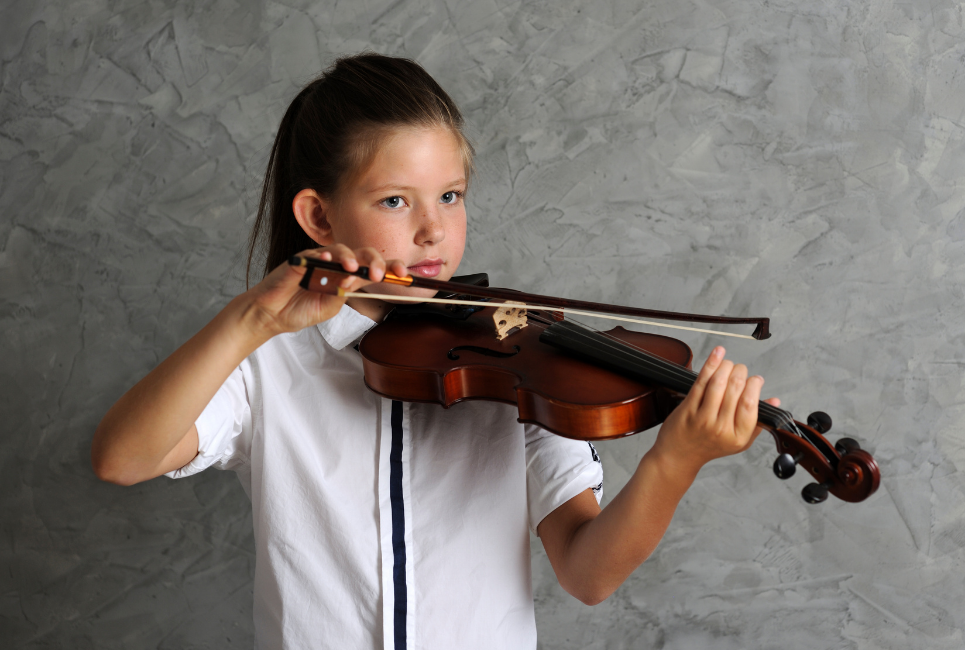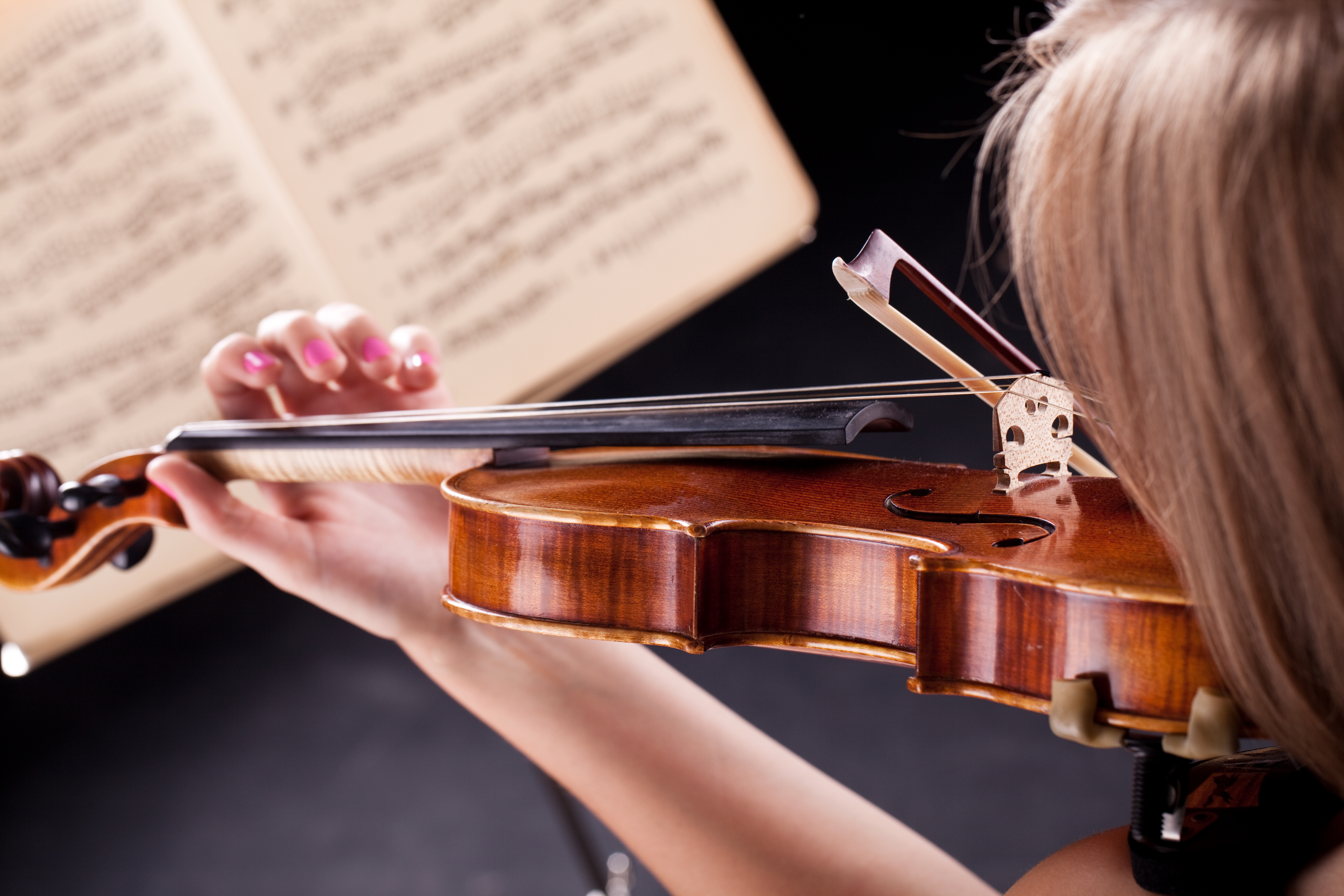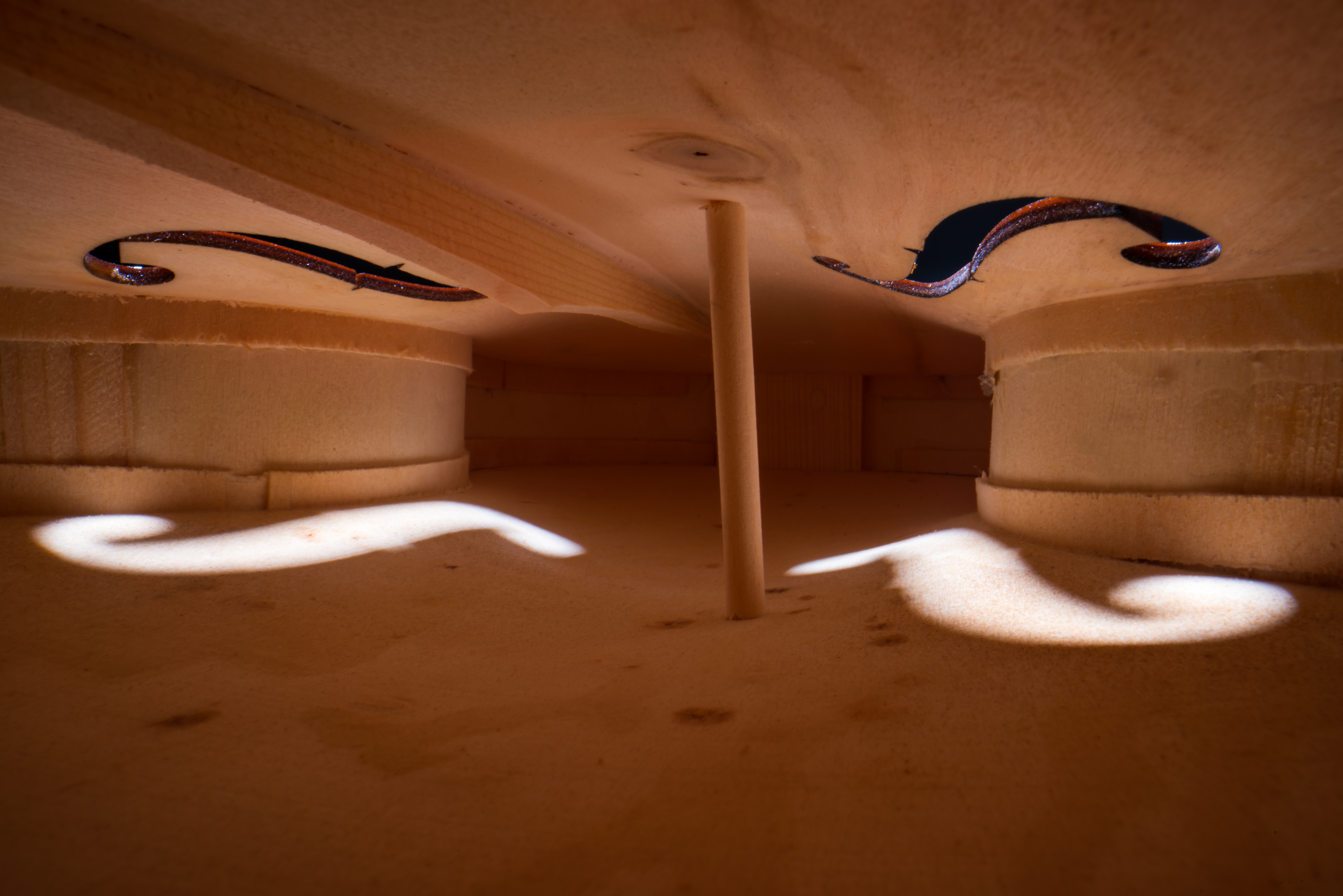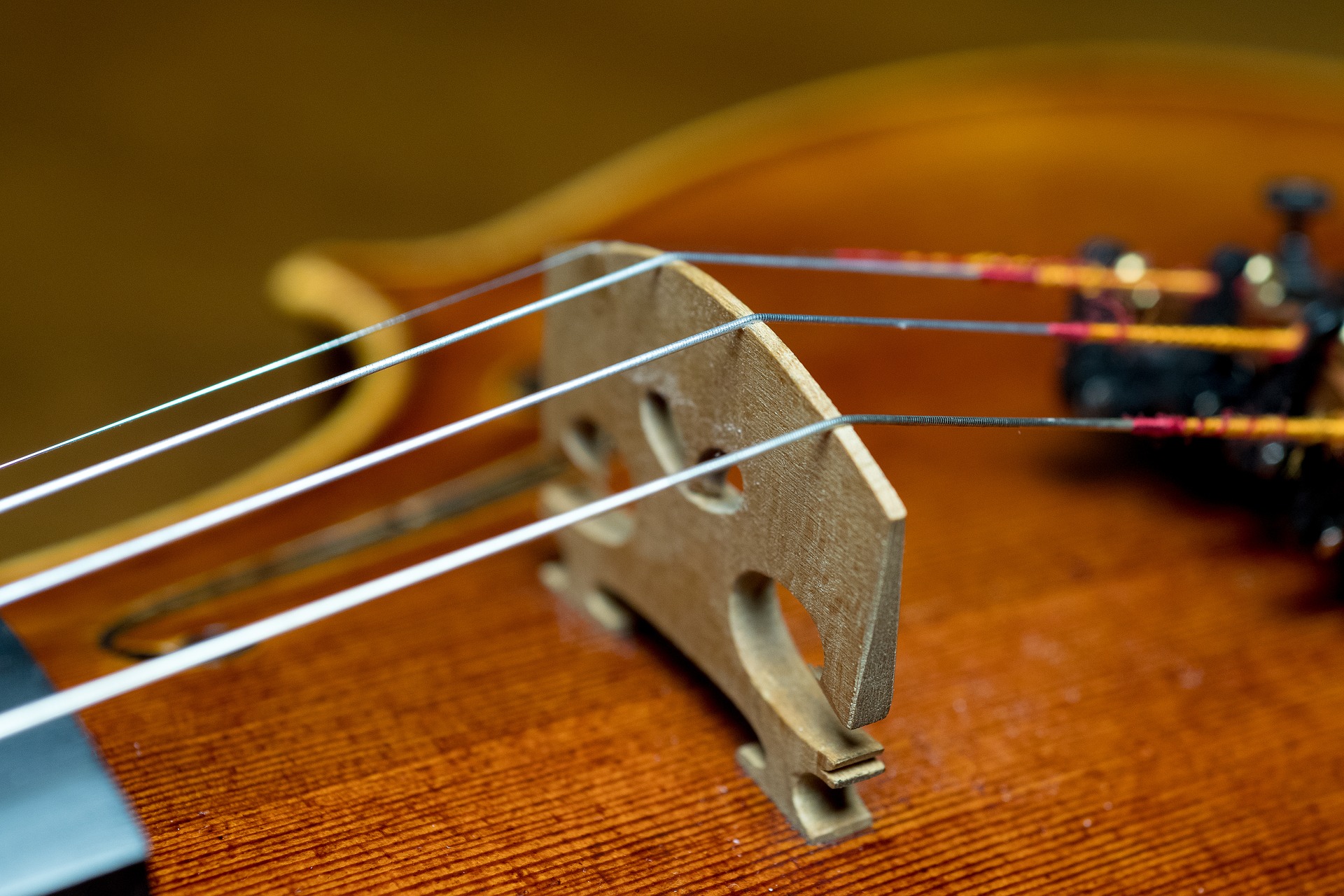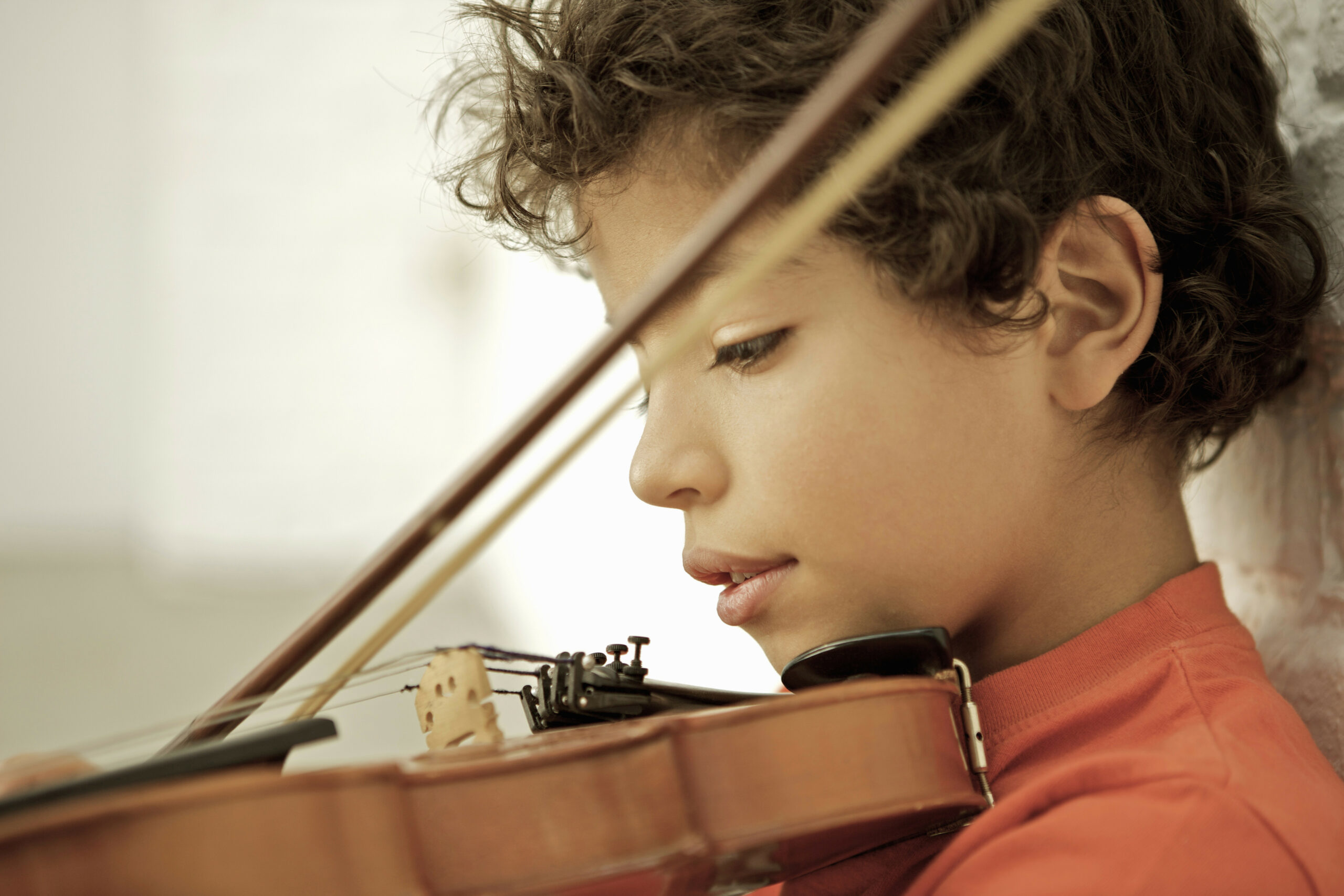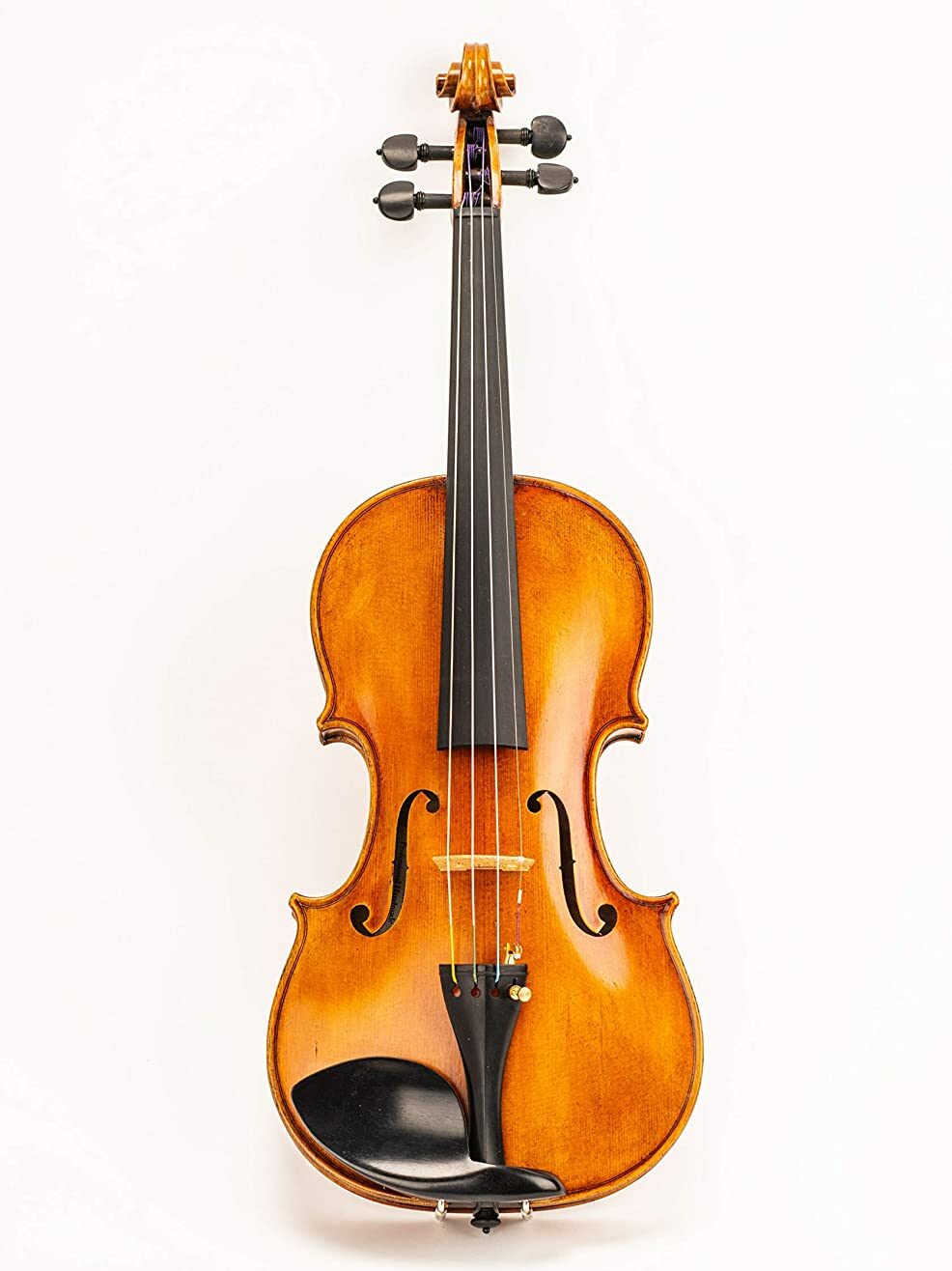- How to Find the Best 5 String Violins - April 21, 2022
- How to Hold a Violin Bow - April 21, 2022
- How to Hold a Cello Bow - April 17, 2022
Summary: Knowing how to find the best 1/8 violin comes down to whether that size is best for your child. This is intended for children, and you do not necessarily need the highest quality materials because children are just beginning with their musical education. However, you do need the right size so that they can properly develop their technique.
Finding the best violin can be difficult no matter your age, but finding fractional sizes for children like the best ⅛ violin can be even more difficult because your options are limited. Not every manufacturer produces such small fractional sizes. If you are a musician and are now looking to purchase a smaller violin for your child, you might be disappointed that your manufacturer does not produce a version for small children. I was sadly disappointed when I learned that the violin brand I loved did not make violins for children. However, that turned out to be for the best because my five-year-old likes to drop their violin when they’re finished and sometimes drag it across the carpeted hallway to their room.
How to Find the Best 1/8 Violin
Finding a high-quality violin can be challenging, especially for a child. Children simply have different needs, especially when just beginning their musical education. Children’s skills and fine motor control will vary significantly from adults, and these are things you have to consider when looking for smaller, fractional-sized violins.
This video demonstrates the size and tone of smaller violins (sometimes called mini violin) for young children:
Who Needs a ⅛ Violin?
There are different violin sizes, each of which is intended for different ages or sizes. The best 1/8 violin is meant for children about five years old. You can see in the chart below that age is good for determining whether a 1/8 size violin is the right fit, but if your child is larger or smaller than the average five-year-old, they might need something slightly smaller or slightly larger, in which case you can refer to their arm length.
| 4/4 or ‘full size’ | Age 11 and up | Arm lengths of 23.5 inches or longer |
| 3/4 | Children 10-11 | Arm lengths between 22 inches and 23.5 inches |
| 1/2 or ‘half-size’ | Children 8-10 | Arm lengths between 20 inches and 22 inches |
| 1/4 | Children 6-7 | Arm lengths between 17.6 inches and 20 inches |
| 1/8 or ‘mini’ | Children 5 years old | Arm lengths between 17.1 and 17.5 inches |
| 1/10 or ‘mini’ | Children 4 years old | Arm lengths between 15 ⅜ inches and 17 inches |
| 1/16 or ‘toy violins’ | Children 2-3 years old | Arm lengths between 14 inches and 15 ⅜ inches |
If you are unsure what size you need for your child based on their arm span, height, and age, you can easily take measurements to determine whether the 1/8 size violin is a good fit. In this video below, you can see the different sizes and their corresponding violin as well as how to take good measurements:
What Considerations are there for a 5-Year-Old?
If you have a 5-year-old or a young child just starting with the violin, the lessons or classes they take will focus on the rudimentary aspects of the notes, the names of each note, and how to play the strings on the violin. At this age, children will focus on maintaining the right finger pressure, holding the bow and the violin the right way, and I warn you that as a parent, it will not sound good when they first start.
By my third child, I was smart enough to invest in very subtle earplugs, the kind I used to see my dad wear when he was operating heavy equipment. It made all the difference, and I could be a much more supportive mother after 1 hour of Three Blind Mice.
This is all to say that young children starting with a 1/8 sized violin will only focus on making minor adjustments and learning the proper technique for playing the violin.
What is the Most Important Factor for Young Children?
So, if you are finding a 1/8 size violin for a child, be it your child, family member, friend, or student, the most significant consideration is size. As mentioned, a 1/8 size is ideal for five-year-olds with an arm length between 17.1 inches and 17.5 inches. Be sure to measure, though, because some children might have slightly longer or shorter arms at that age and therefore need a different size. If they do not have the right size, they will fumble a lot more and have problems and sometimes even pain when holding the violin properly and holding the bow.
When purchasing a violin of this size, it is quite common to find violin kits. Kits include:
- The violin
- A case (hard or soft)
- Strings (sometimes extra strings)
- A bow
- Rosin
- A music stand
Different kits might emphasize different products. For example, knowing that the 1/8 size violin is for children will include access to digital lessons or a music stand and music folders specifically for their classes.
I would always recommend investing in a kit, especially for young children. Then, you do not have to worry about whether the strings are the right size or the right type, whether your child will damage their instruments, or whether they have someplace to store all of their music and supplies. A kit gives you everything your child needs and usually comes with storage pockets or a zipper compartment where everything can be kept handy.
What is the Least Important Factor for Young Children?
The least important at this age is high-quality materials. It is unlikely that your child is a prodigy, no matter how much you wish for it. I should know; I wished for a prodigy of a child and ended up with one who was slightly tone-deaf.
That said, most fractional-sized violins for children are still made with the same common materials. You will find combinations of Maple and Spruce for the bodywork of the violin, some ebony, synthetic strings, and maybe a horsehair bow. You do not have to invest in the most expensive violin. High-quality violins cannot compensate for lack of skill. What matters most at this age is simply that the violin fits its size.
⅛ Violins that Work Well and Which to Avoid
Younger children have different needs when they play the violin. If the instrument does not fit their body, it can impact their confidence early. It is easy enough to think that one size up will not make that big a difference, especially when you know that your child will eventually grow into that size, but you need a smaller model that fits their hand shape and arm strength.
String Type
There are many high-quality strings for violins, but most new strings on a 1/8 size violin are either steel or synthetic strings. Steel strings last longer and are very durable, but they can be painful for your children’s fingers. If you do not like the strings that come with the violin, you can always buy synthetic strings which are softer from manufacturers like:
- D’Addario
- Pirastro
- Thomastik
- Larsen
Bridge
At a young age, the shape and location of the bridge are very important. Bring the violin to a music shop and have them adjust and shape the bridge to fit your child. This is usually done with adult violins but not always with a student or 1/8 size violin. It is important because if the bridge is too high, your child will have trouble pressing the strings on their fingerboard, and if it is not shaped properly, they will not be able to cross their strings easily.
Chin Rest
With a 1/8 size violin, the chin rest has to be properly shaped and positioned the same as the bridge, or it can be not only uncomfortable but potentially painful for your child to hold the violin. A good chin rest should fit comfortably underneath their chin so that their head is kept straight while they look at the fingerboard. Chin rests built with a high ridge might be uncomfortable for younger players, and if they do not like the one on their 18-size violin, you can always purchase a separate chin rest and swap it.
Shoulder Rest
Similarly, the shoulder rest should help your child maintain posture while playing a 1/8 size violin. You do not want any tension while playing, so the shoulder rest needs to be right in the middle of firmness and softness. Just the same as a chin rest, you can choose to replace the shoulder rest that comes with the 1/8 size violin with something more comfortable.
Sound Quality
If you buy a brand new 1/8 violin, know that just like any other instrument, it will take a while to break in before the sound quality is ideal. A smaller child will likely take longer because they don’t play their instruments as often as intermediate or professional musicians. So, try to exercise patience (and maybe invest in those earplugs).
1/8th Violin Recommendations
If you want to buy a 1/8th violin, I have a few recommendations that vary in affordability. Since 1/8th violins are more popular than their smaller counterpart, the 1/16th, and 1/32nd. They still aren’t nearly as many made as 3/4th or full size simply because they are in demand and don’t have the same resale value. I chose these due to their price to quality ratio and ability to serve students through their introductory learning period.
Top Pick
My top pick comes from the orchestral string company Fiddlershop and their budget instrument line, Tower Strings. The Tower Strings Entertainer is an excellent violin for under 300 dollars. Gone are the days that only VSO could be found under this price. This violin comes with aged, solid carved spruce and maple tonewoods, a hand-carved Asian bridge, Prelude strings, and 100% ebony fittings and fingerboard. Along with a violin set up and ready to play, you will receive a case, Brazilwood bow, rosin, shoulder rest, practice mute, and tuner. Your child’s teacher will be sure to love this violin as well, thanks to high-quality construction and good tone (for the size anyway).
Pros
- Perfect for a family with multiple kids who will cycle through this size
- High quality for the size of the instrument
- Good resale value
- Comes with every accessory needed to get started
Cons
- More expensive than other picks
Budget Pick
The Cremona SV75 is a budget violin that I recommend to those searching for a 1/16th or 1/8th option. It’s a great starter violin for your small musicians made with quality spruce, maple tonewoods, and hardwood pegs. The only major con is that the fittings are not made from ebony. There is no mention of the fingerboard material either. Honestly, on such a tiny violin that will be traded up in no time, it’s not really a cause for concern. The most important factors are that it is measured correctly, the setup and strings are good quality, and comfortable for your student to hold.
Along with a complete setup and prelude strings, you will also receive a case and a basic brazilwood bow. A shoulder rest and method book will need to be purchased separately. I recommend a Kun or Fiddlershop shoulder rest, and the method book should be assigned by your teacher. Suzuki and Essential Elements are the most common.
Pros
- Made from good quality tonewoods
- From a well-known maker of violins and their parts
- Wittner style tailpiece (4 built-in fine tuners, carbon composite)
Cons
- Only comes with the very basic accessories
- Won’t stand up against multiple children
Step Up in Quality
DZ Strad makes some really amazing and beautiful violins, but they haven’t forgotten about your tiniest of players. They’ve made their entry model, the DZ Strad 100, available for small players. This violin is made with quality spruce and maple tonewoods and built to give your student the more responsive warmest sound (you can realistically achieve from such a tiny instrument) so your student will be off on a great start. The fingerboard and fittings are complete ebony, and the Wittner style tailpiece will make tuning a breeze. This violin comes completely set up to Suzuki and MENC standards so you know you are getting something that you can keep around for years. The outfit includes a case, shoulder rest, bow, and rosin.
Pros
- Great quality violin that is sure to please your student’s teacher
- Set up by real Luthiers, not factory workers
- Ready to play out of the case
- High-quality accessories
Cons
- A little expensive for a small instrument that will be upgraded soon
Full Outfit and More
For a similar price to the DZ Strad, you can get a fantastic starting violin that comes with extra accessories your student will find useful and better strings. The Bunnel Pupil is a high-quality and well-loved starter violin outfit. Made from quality spruce and maple tonewoods and paired with high-quality accessories, you will get everything you need to get started, at least until you move up a size. Along with quality tonewoods, you will find a violin with 100% ebony fittings and a Guiliani Brazilwood bow, Prelude strings, a spacious case, shoulder rest, and polishing cloth. This is a great choice if you have multiple small musicians who will cycle through a 1/8th violin, as it can hold up to years of use and is made from quality materials.
Pros
- A complete outfit and extra accessories
- Good quality student strings
- Wittner style tailpiece
- A good quality bow that should last the life of the instruments used
- A large case with shoulder rest pocket
- Set up in the US in their workshop on the West Coast
Cons
- Expensive for an instrument that will be used so little unless you have multiple players
FAQs
Answer: The right size violin is based on measuring your arm span or your age. The 1/8 size violin is typically best for five-year-old children or those with an arm span between 17.1 inches and 17.5 inches.
Answer: Violins are measured from the neck to the wrist, and a 1/8 size violin is usually 15 and 1/4 inches long. By comparison, the next size down, the 1/10 size violin, is about 14 and ¼ inches long. Comparatively, the next size up, the quarter size or ¼ size violin, is usually 17 and ¼ inches long.
Answer: 1/8 size violins, sometimes called mini violins, are intended for children. They are very small and typically fit the arm span of a five-year-old. Of course, your child might have a slightly longer or shorter arm span, in which case they can move up or down the fractional sizes for violins.
Answer: Fractional size violins like a 1/8 size violin are typically cheaper than full-sized simply because it takes fewer materials to make them. You can still invest in high-quality materials, even for something small. On average, a 1/8 size violin will cost between $75 and $200 depending on the materials and whether the violin comes with a kit or is sold on its own.
Bottomline
The bottom line is that parents or music teachers will need to know how to find the best 1/8 size violin when helping their children get started with the violin. The first step is simply making sure that you have the correct size. Children tend to grow rapidly, so they might outgrow a 1/8 size within one year or less, depending on when their growth spurts hit. With the right size, they will develop their technique early on, establishing good muscle memory.
Looking for more interesting readings? Check out:

